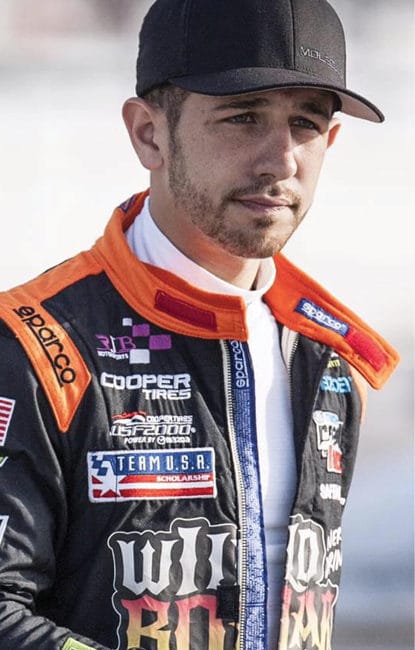
Fast Forward: What Is the Indy 500’s Future?
Ride-along mechanics were a fixture into the late 1930s, and “Back Home Again” blared over the speakers for the first time in 1946. Point being, the Indy 500 and its traditions have had some tune-ups over the years. Here are a few more that would help the race make it to a 200th running.
More American drivers? Yes, and …
Only three American-born drivers have won since 2000, fueling calls for more red, white, and blue. At least a dozen likely qualifiers now claim the stars and stripes, some with famous last names like Andretti and Rahal. But none inspires the kind of fan fervor NASCAR’s top stars enjoy. Could one of the young drivers with Noblesville ties, Conor Daly and Bryan Clauson, be a generational talent who transcends the sport? Sure—if he wins.
… more U.S. drivers who look like America.
Only one African American has started since Willy T. Ribbs was the first in 1991. U.S.-born Latinos have been scarce as well. That could change. From a biracial family near Chicago, Michai Stephens earned a Skip Barber Racing School scholarship, offered to provide opportunities in motorsports, and entered the USF2000 series this season. He’s also a mentor in Indy-based Nexgeneracers, instructing underserved kids: “I see tremendous possibility in doors opening to people of various backgrounds here in America,” he says.

Grace Autosport
Can women shift into the next gear?
Danica Patrick proved that a woman can win in IndyCar and that fans are willing—eager—to cheer her on. Last May, newly formed Grace Autosport announced plans to crash another glass barrier: With Katherine Legge at the wheel and Beth Paretta calling the shots, the venture sought to become the first completely female team to qualify. “There will be a very powerful statement when, at the starting lineup, you see a row of all women, wearing the same uniform, standing shoulder to shoulder,” Paretta told IM earlier this year. But the drive to compete in the 500 stalled short of the finish line less than two weeks before the race, when Grace Autosport announced it wasn’t able to complete a deal for a car. The group has already had some impact, however: More than role-modeling, they are helping to create content for classrooms. “Grace Autosport is an educational initiative that happens to have a race team,” says Paretta. “It’s a living example of what women in STEM careers can do.”
Will Indy cars plug in?
It might be difficult to believe the roar of twin-turbo V6s will one day be replaced by the whine of electric motors. But the technology has made inroads with the open-wheel Formula E Series, which raced in Miami and Long Beach last year, and an emerging generation of fans tends to care more about computers than the nuts, bolts, and grease that thrill old-school gearheads. Plus, the series has star power: Leonardo DiCaprio and Richard Branson both own stakes in Formula E teams.
A Need for Speed
Fans haven’t heard “new track record” over the IMS speakers on a qualifying day since 1996. The pursuit of new records should return—especially since thrilling speeds are an advantage IndyCar has over NASCAR. Safety is a concern (500 drivers expected averages of 233-plus mph at the IMS last year, before crashes prompted rule changes). A compromise reportedly considered by the IMS would bring back the track “apron,” helping prevent speed loss in the corners.

Snake Pit
Let’s make a deal.
IndyCar’s TV contract with NBCSN, reportedly worth $60 million over 10 years, seemed like life support for an ailing series in 2008. But it might have been shortsighted. Despite the network’s limited reach, IndyCar viewership has increased slightly (granted, it had nowhere to go but up), while motorsports overall have regressed. The 500, with 6.4 million viewers last year, reestablished itself as the most-watched race that weekend, usurping NASCAR. There’s reason to be optimistic that IndyCar can swing a better deal next time.
The Snake Pit is back—but will the revelers return to watch racing when the party’s over?
About 25,000 people flock to the IMS infield on race morning, many of whom couldn’t care less about the cars. Hats off to the IMS for creating an attraction (electronic music and bacchanalia) that keeps the facility relevant for a young demo. “We’ve gotten them to the venue—the challenge is, how do we get them to come to the venue for racing?” says IMS president Doug Boles. If the old Snake Pit is any guide, he thinks it’s a matter of time. “People didn’t come for the race. They came for the party, and eventually they grew up, decided this is what they did on Memorial Day weekend, and made it their regular stop on Memorial Day weekend.”
This article is part of IM’s special May 2016 coverage of the 100th Running of the Indianapolis 500.





